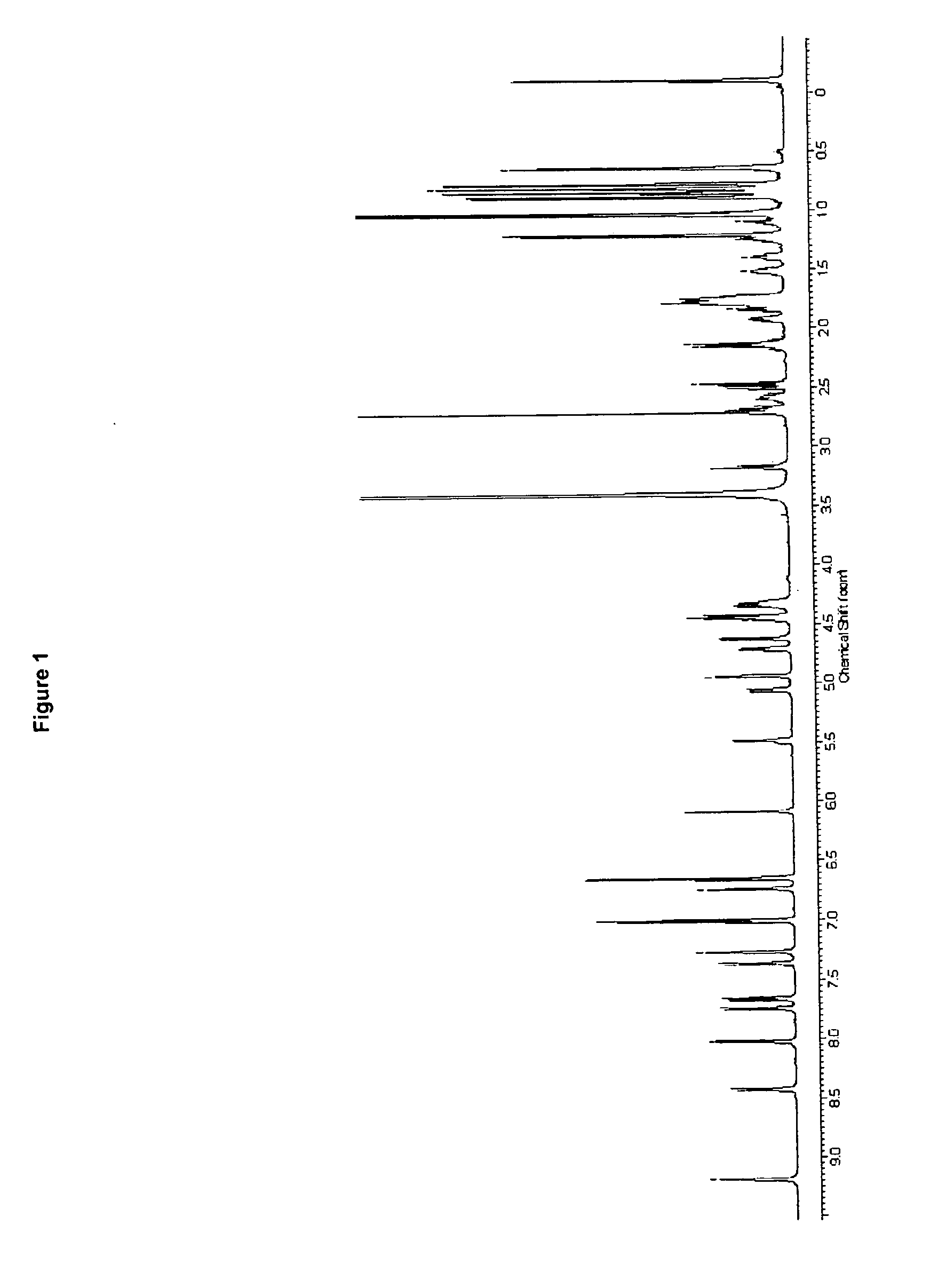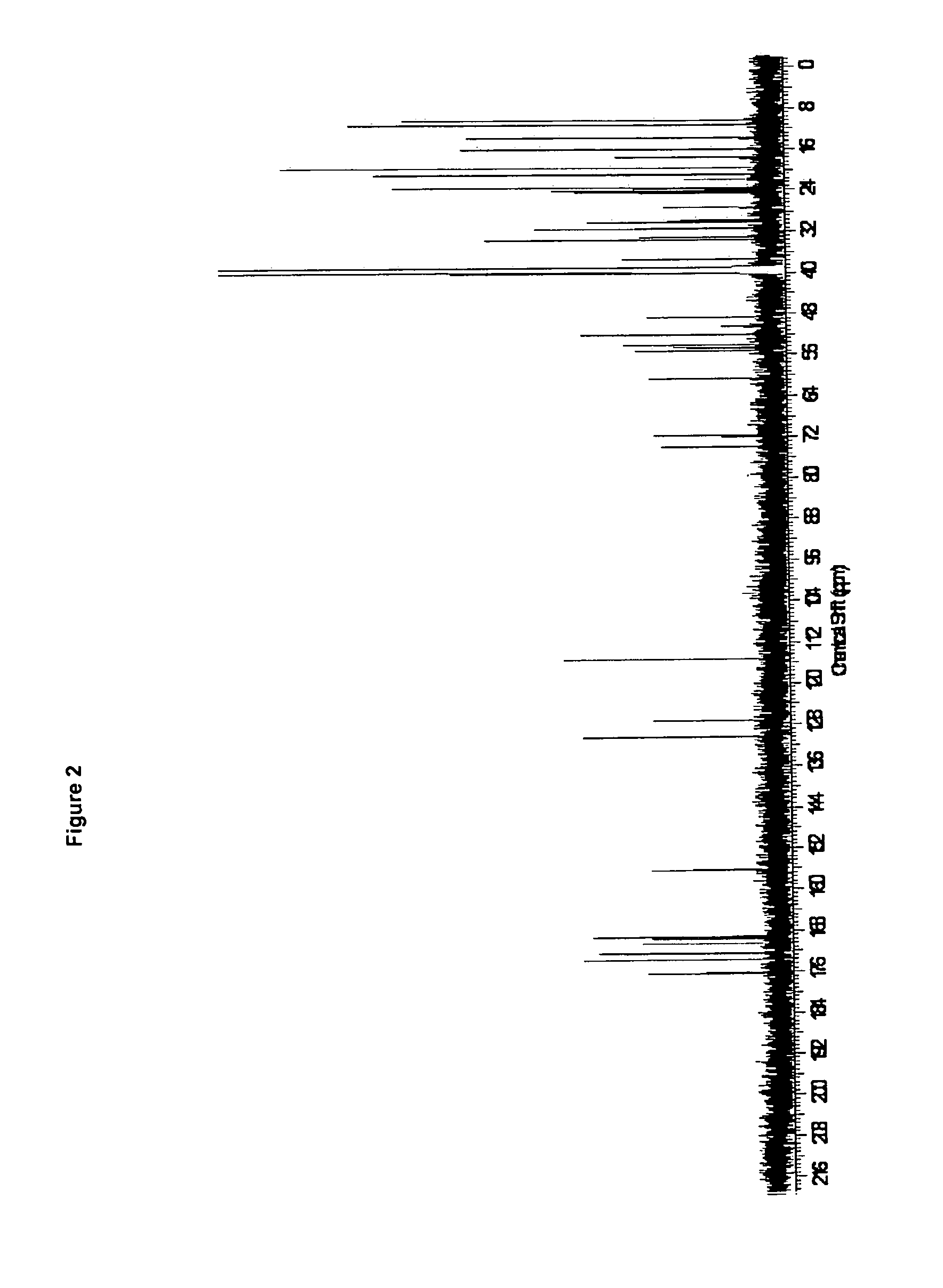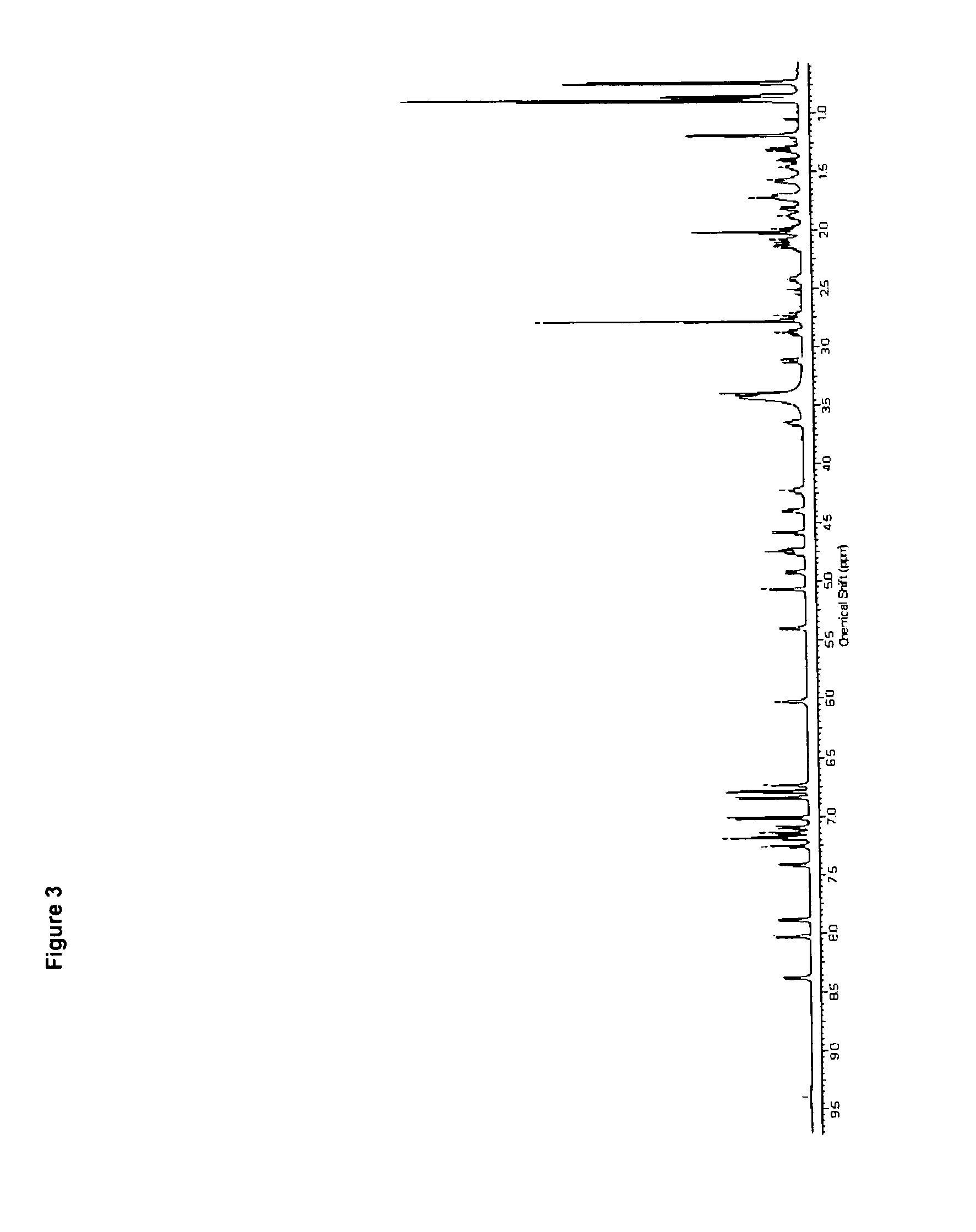Use of cyclic depsipeptides to inhibit kallikrein 7
a technology of kallikrein and cyclic depsipeptides, which is applied in the field of cyclic depsipeptides, can solve the problems of overactivation of hk7, disturbance of lamellar membrane architecture, and uncontrolled activation of proinflammatory cytokin
- Summary
- Abstract
- Description
- Claims
- Application Information
AI Technical Summary
Benefits of technology
Problems solved by technology
Method used
Image
Examples
example 1
Production of the Compounds of Formula (II)-(VII)
Strain:
[0125]The Chondromyces crocatus strain was isolated from an environmental sample, rotten wood of a walnut tree, in our laboratories.
[0126]The strain has been unambiguously identified as a Chondromyces crocatus based on the morphology of the fruiting bodies as well as on the partial sequence of the 16S-RNA gene. C. crocatus was assigned to biological risk group 1 by the DSMZ (DSMZ (2007)). Chondromyces is a genus in the family Polyangiaceae, which belongs to the order Myxococcales within the Delta-proteobacteria. Bacteria of the order Myxococcales, also called myxobacteria, are gram-negative rod-shaped bacteria with two characteristics distinguishing them from most other bacteria. They swarm on solid surfaces using an active gliding mechanism and aggregate to form fruiting bodies upon starvation (Kaiser (2003)).
[0127]The Chondromyces crocatus strain of the invention has been deposited at the DSMZ under the accession number 19329...
example 2
Production of Compound of Formula (VIII, IX, X)
Strain:
[0149]The Chondromyces robustus strain was isolated from a dung sample. The Chondromyces robustus strain of the invention has been identified as a Chondromyces robustus based on the morphology of the fruiting bodies as well as on the partial sequence of the 16S-RNA gene. C. robustus was assigned to biological risk group 1 by the DSMZ (DSMZ (2007)). Chondromyces is a genus in the family Polyangiaceae, which belongs to the order Myxococcales within the Delta-proteobacteria. Bacteria of the order Myxococcales, also called myxobacteria, are gram-negative rod-shaped bacteria with two characteristics distinguishing them from most other bacteria. They swarm on solid surfaces using an active gliding mechanism and aggregate to form fruiting bodies upon starvation (Kaiser (2003)).
[0150]The Chondromyces robustus strain of the invention has been deposited at the DSMZ under the accession number 19330.
Cultivation:
[0151]100 L fermentor cultures...
example 3
[0168]The compounds of the present invention, e.g. including a compound of formula II-X, exhibit pharmacological activity and are therefore useful as pharmaceuticals. E.g., the compounds of the present invention are found to inhibit Kallikrein-7 activity.
[0169]Compounds of the present invention have IC50 values between 1 nM and 10 μM as determined in the following assay:
Materials and Buffers
[0170]The fluorescence-quenched substrate Ac-Glu-Asp(EDANS)-Lys-Pro-lle-Leu-Phe^Arg-Leu-Gly-Lys(DABCYL)-Glu-NH2 (SEQ ID NO1) (where ^ indicates the scissile bond, identified by MS analysis) is purchased from Biosyntan (Berlin, Germany) and kept as a 5 mM stock solution in DMSO at −20° C. All other chemicals are of analytical grade.
[0171]Enzymatic reactions are conducted in 50 mM sodium citrate buffer at pH 5.6 containing 150 mM NaCl and 0.05% (w / v) CHAPS.
[0172]All protein and peptide containing solutions are handled in siliconized tubes (Life Systems Design, Merenschwand, Switz...
PUM
| Property | Measurement | Unit |
|---|---|---|
| volumes | aaaaa | aaaaa |
| temperatures | aaaaa | aaaaa |
| temperature | aaaaa | aaaaa |
Abstract
Description
Claims
Application Information
 Login to View More
Login to View More - R&D
- Intellectual Property
- Life Sciences
- Materials
- Tech Scout
- Unparalleled Data Quality
- Higher Quality Content
- 60% Fewer Hallucinations
Browse by: Latest US Patents, China's latest patents, Technical Efficacy Thesaurus, Application Domain, Technology Topic, Popular Technical Reports.
© 2025 PatSnap. All rights reserved.Legal|Privacy policy|Modern Slavery Act Transparency Statement|Sitemap|About US| Contact US: help@patsnap.com



